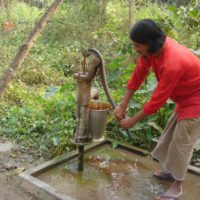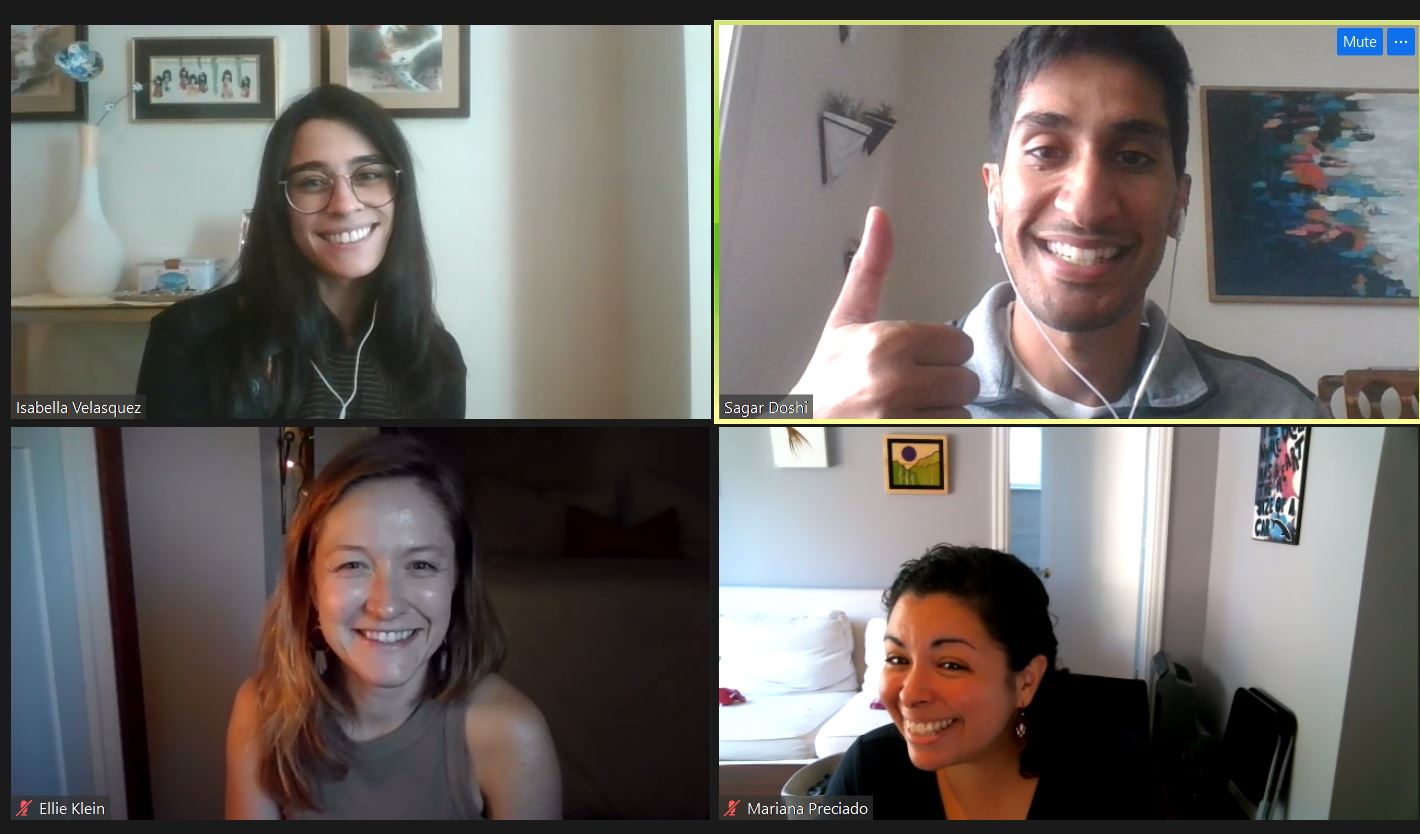Safe Water Consumption in Arsenic-Affected Areas of Rural India: An Engineer Explores Behavior Change


By Caroline Delaire, PhD Candidate, Civil and Environmental Engineering, UC Berkeley
Caroline is the 2012 winner of the CRB’s Dow Sustainability Innovation Student Challenge Award.
Fall 2012. I had just graduated from a Master of Science in Environmental Engineering and decided to pursue my PhD on access to safe water in arsenic-affected areas of rural West Bengal, India. In a traditional engineering fashion, my dissertation was about to be purely technical and focus on the removal of arsenic and pathogens from groundwater with a low-cost technology called iron electrocoagulation. This rich scientific topic was fascinating (and still is), but it didn’t feel to be fully relevant by itself. Is a technology enough to address a water crisis such as the one affecting rural Bengal, where millions of hand-pump tubewells are naturally contaminated with arsenic (a poison that causes a range of cancers and premature death)? Can engineering alone, even allied with the best intentions, come up with an adapted solution to this persisting disaster?
It didn’t seem so. Worldwide, low-cost technologies for drinking water treatment repeatedly come up against the wall of entrenched household water behaviors, and fail. Lack of behavior change is often the death knell of engineering solutions to unsafe water, from solar disinfection to household filters and chlorine sachets. Even though it was untraditional, I felt the urge to add a social science component to my PhD project, with the goal of understanding the mechanisms of behavior change that control the adoption of safe water solutions. This didn’t go without saying, and the battle to convince my dissertation committee members was far from being won. Fortunately, winning the SISCA Runner-Up prize legitimized my multi-disciplinary agenda, and gave me great confidence. One year later, my committee members officially approved my research project, and I could start planning a trip to West Bengal, India to study behavior change in villages where it was already underway.
In Fall 2014, I set out to the remote and poor district of Murshidabad, India, to quantify the adoption of alternatives to arsenic-contaminated tubewells, in communities where purchased water and household filters were available. I used the SISCA prize money to hire a team of local surveyors and purchase a few Android tablets to conduct digitized interviews. We surveyed 501 households over the course of 2 months, which were definitely the most intense 2 months in my life! Data analysis is still in progress, but I would like to share a few primary conclusions. My time in the field acted to deconstruct three assumptions often made by engineers who work on arsenic remediation.The lessons I learned could be of interest to those trying to address the arsenic crisis or any other unsafe water problem in the developing world.
1. The first assumption: affected communities care about arsenic. Arsenic is a terrible poison, and we care about it, so people should care about it too.
Groundwater in Bengal is contaminated with arsenic, but it also has two more salient problems: high levels of iron (which isn’t much of a health threat compared to arsenic, but gives a rusty color and taste to water) and a well-known tendency to cause gastric problems (which is not surprising in an area with limited sanitation and seasonal flooding). Both iron and gastric problems generate immediate dissatisfaction, while arsenic is colorless, tasteless, and has health repercussions only in the long term. In addition, some of these health effects, such as cardiovascular diseases and internal cancers, are not directly visible and linkable to arsenic. Arsenic being less salient than iron and gastric problems, it is also frequently much lower on people’s concerns list. This is neither good nor bad, this is just reality.
Interestingly, disinterest for arsenic does not mean that people don’t seek alternatives to contaminated water, for the very reason that this water has other salient issues. In fact, local water plants advertise their product as “arsenic, iron, and bacteria free”, echoing all of people’s concerns about water, as opposed to just arsenic. For those of us who aim to implement arsenic removal technologies in rural Bengal, the lessons are: (1) that the issue we are trying to solve is not necessarily the issue that people are concerned about, and (2) that no behavior change will happen unless we can address people’s primary concerns. Shouldn’t we start advertising treated water as iron and pathogen free, with arsenic removal being a side benefit?
2. The second assumption: if safe water can be provided at very low-cost, people will purchase it.
In the villages that I visited, treated water was available at 25 rupees per 20 liters ($0.07 per gallon). I would call this rate affordable, even by local standards: buying a sufficient amount of safe water for a family of 4 costs 75 rupees per week, which is what the average man spends on cigarettes in 10 days. Does it mean that every household purchases treated water? No. I found that only 25% of households purchased water. But another 20% was using other alternatives to private tubewells: domestic filters or deep government tubewells. Although we know that these alternatives do not provide arsenic-free water, they remove the burden of iron and in effect compete with arsenic-safe purchased water, because people don’t perceive the difference. We need to keep in mind that in the field, ineffective technologies will compete with the effective ones we strive to design. Our effective technologies must have other perceivable advantages than arsenic removal if we want them to win that competition.
3. The third assumption: once people purchase safe water, the problem is solved.
Purchasing safe water is not the same thing as drinking safe water all the time. Two thirds of the people who purchase water concurrently drink contaminated tubewell water. Some families drink safe water only in sick times or in special occasions. In some households, a few members drink safe water while the others still drink tubewell water. This is what behavior change looks like. It is messy, progressive, slow and irrational. But it is what it is, and we need to keep trying to understand the factors driving it.






